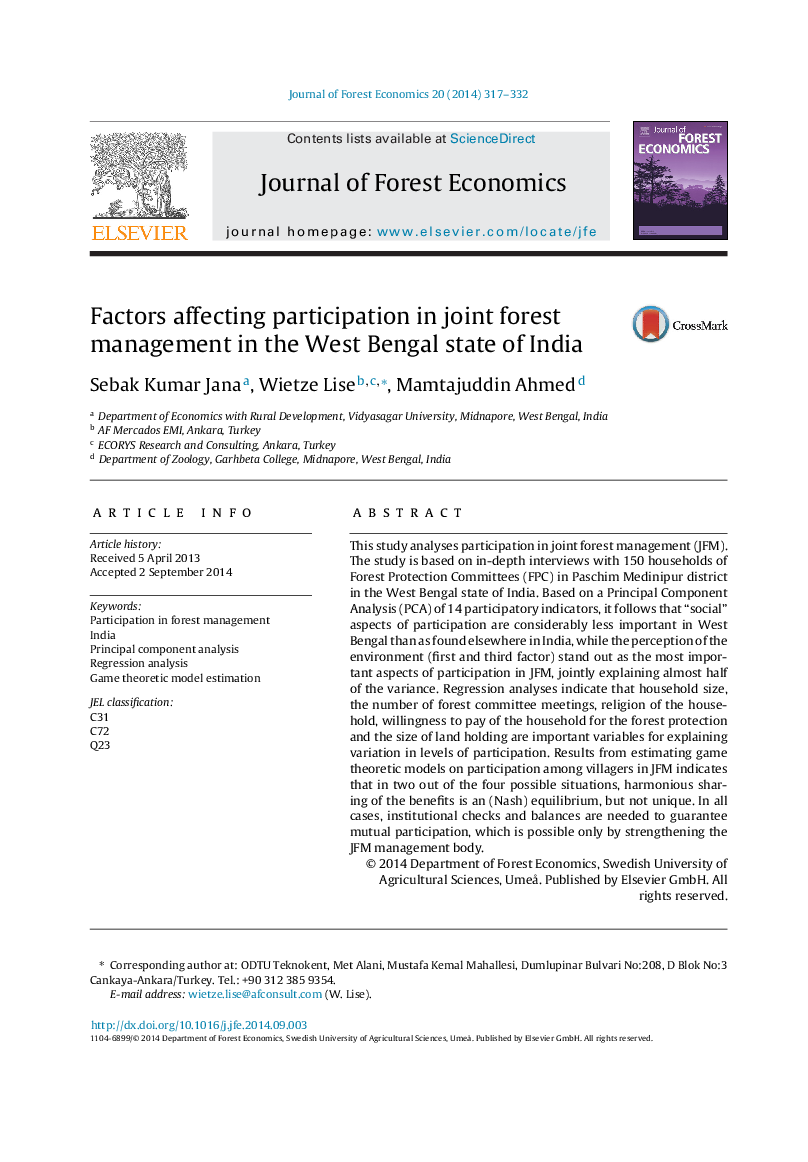| Article ID | Journal | Published Year | Pages | File Type |
|---|---|---|---|---|
| 91784 | Journal of Forest Economics | 2014 | 16 Pages |
This study analyses participation in joint forest management (JFM). The study is based on in-depth interviews with 150 households of Forest Protection Committees (FPC) in Paschim Medinipur district in the West Bengal state of India. Based on a Principal Component Analysis (PCA) of 14 participatory indicators, it follows that “social” aspects of participation are considerably less important in West Bengal than as found elsewhere in India, while the perception of the environment (first and third factor) stand out as the most important aspects of participation in JFM, jointly explaining almost half of the variance. Regression analyses indicate that household size, the number of forest committee meetings, religion of the household, willingness to pay of the household for the forest protection and the size of land holding are important variables for explaining variation in levels of participation. Results from estimating game theoretic models on participation among villagers in JFM indicates that in two out of the four possible situations, harmonious sharing of the benefits is an (Nash) equilibrium, but not unique. In all cases, institutional checks and balances are needed to guarantee mutual participation, which is possible only by strengthening the JFM management body.
